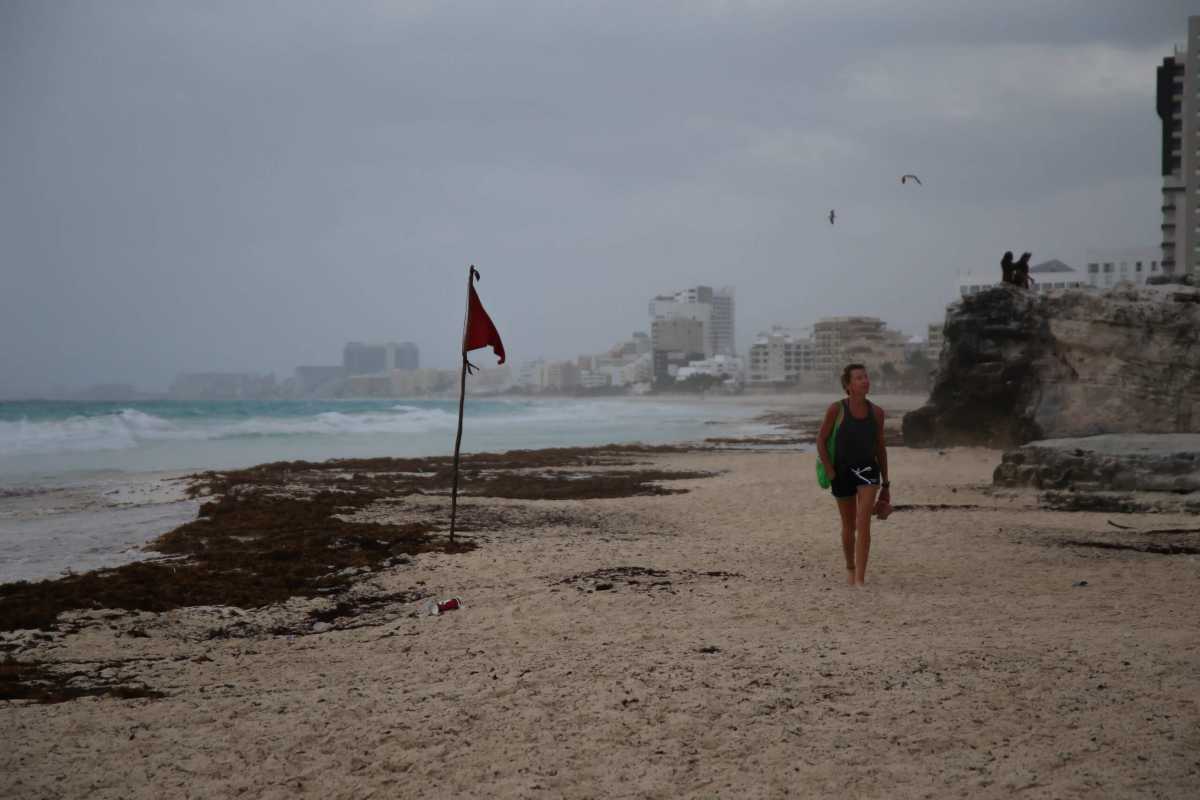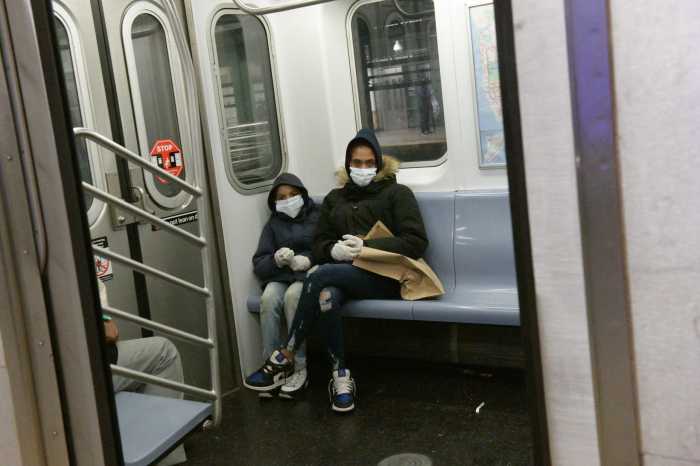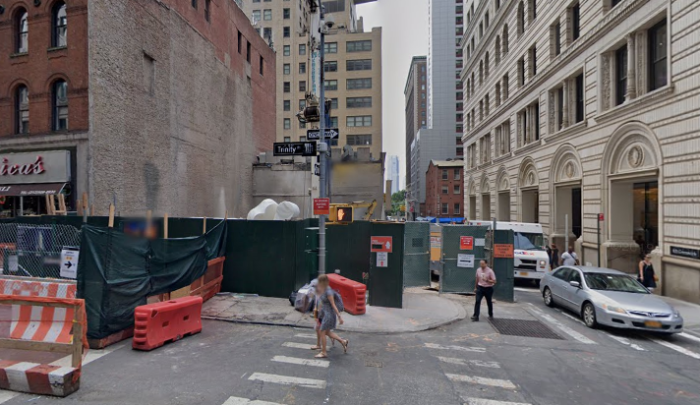All city beaches will be closed to swimming Sunday, Aug. 22 and Monday, Aug. 22, due to the dangerous conditions predicted as an effect of Tropical Storm Henri, NYC Parks announced Friday. Meanwhile, the Metropolitan Transportation Authority is taking precautionary measures, and urging New Yorkers to avoid public transit if they can.
The National Weather Service is predicting ocean swells along the Atlantic between 2 and 4 feet during the storm, with potential wind gusts of up to 60 mph.
Red flags and closure notices will be posted along all beaches, and Parks staff will be surveying beaches across the five boroughs to keep rule-breakers out of the water. Surfing will be allowed in designated areas only.
“We are serious about protecting all parkgoers. Out of caution for the dangerous conditions that are predicted, we have decided to close all City beaches to swimming,” NYC Parks Acting Commissioner Margaret Nelson said in a statement. “While surfing will still be allowed, lifeguards will not be on duty, and we strongly urge all New Yorkers not to risk their lives by ignoring this directive.”
The city agency is also advising New Yorkers to be careful in their local green spaces, as the expected high winds can impact street and park trees.
As the steward of the city’s trees, Parks is also urging New Yorkers to report fallen trees to the appropriate channels (911 if there is a life-threatening emergency, or 311 if it is not).
As for the city’s transit honchos, the MTA on Friday issued a slate of precautions they’re planning to take ahead of Tropical Storm Henri, which is expected to become Hurricane Henri early Sunday morning.
As of early Friday morning, Henri sat off the South Carolina coast with maximum sustained winds of 65 mph. Forecast tracks have the storm strengthening into a Category 1 hurricane (minimum winds 74 mph) as it moves northward before eventually colliding with the northeast coastline — either in New England or eastern Long Island — sometime on the afternoon of Aug. 22.
The most recent forecast models have the center of Henri tracking more westward than before, which prompted the National Hurricane Center to put Suffolk County under a hurricane watch Friday. Nassau County was put under a tropical storm watch, and that advisory was extended along the Rockaway Peninsula in Queens down to Sandy Hook, New Jersey.
“We can’t control Mother Nature but we can and have been proactively tackling those things that significant weather events typically affect such as overgrown trees, utility poles, drainage and switches to mitigate impacts and provide safe travel,” said LIRR President Phil Eng. “When storms such as Tropical Storm Henri hit, we strongly advise to avoid unnecessary travel if possible but rest assured, the LIRR workforce will be out in full force to protect service and keep you safe. If you have to travel, real-time information is available through our TrainTime app, which is the best place to look for the latest travel data before, during, and after any storm.”
Henri’s projected path shows the most significant potential impacts to Metro-North’s New Haven Line, said Metro-North President Catherine Rinaldi.
“We will inspect culverts and poor drainage areas and preposition equipment and personnel as necessary so we can respond quickly to any impacts of the storm to our system,” she said, adding, “Metro-North territory is particularly vulnerable to high winds due to trees and overhead power wires, and customers should plan for the possibility of delays and disruptions when the storm hits and check mta.info for the most up to date service information.”
More precautions the MTA and its partners are taking ahead of Henri, per the agency:
LIRR and Metro-North
- Strategic deployment of maintenance personnel including track, signal and power staff.
- Strategic deployment of emergency equipment, such as protect engines, throughout the service territory.
- Have additional public information officers and public address announcers on duty to keep customers informed with up-to-the-minute service information.
- Safety messaging reminding customers to take extra caution when traveling will be made at stations, on trains and platforms, email/text alerts and social media.
- Long Island Rail Road is communicating with PSE&G to ensure proper coverage to protect service disruptions due to downed wires.
- Depending upon the severity of conditions, service could be reduced or temporarily suspended.
Subways
- Stage crews to monitor and respond to flood-prone locations.
- Prepare crews on debris trains for supporting clean-up activities.
- Inspect 10 track pump locations.
- Inspect 30 drains at flood prone locations and ensure they are ready to accept water and not create any unsafe conditions.
- Inspect 34 direct sewer connections.
- Cover street vents at six key locations.
- Prepare, fuel and test equipment for debris clearance, if necessary.
- Inspect and stage emergency trucks, pumping equipment, and emergency response equipment.
- Continue to monitor weather reports and assess any implications of storm conditions on high tides or storm surge.
A Local Storm Desk will be activated if conditions warrant, according to the agency, and all maintenance departments will be staffed sufficiently. Crews will perform frequent signal switch tests to ensure all signals are functioning as intended and activate weather-related precautions as needed. Non-essential repair, maintenance and construction work is being evaluated for possible suspensions if the weather warrants.
Buses
- All depots will pay special attention for flash flooding. If flooding occurs, depots will respond and move fleets before water levels get too high.
- Flood prone route corridors will also receive extra monitoring.
- Ensure bus windows, hatches and doors are closed.
- All depot parking areas and perimeters will be inspected for unsafe conditions.
- Bus depots will have extra staff to assist in the event a bus is disabled.
- All road trucks will be equipped with chainsaws and any other debris equipment needed.
There will be around-the-clock staffing for maintenance, operations and customer service departments.
Bridges and Tunnels
- All facilities are fully prepared and staffed for any weather-related incidents.
- Electronic weather sensors are functional, and all facilities can monitor weather and roadway conditions.
- Areas that have proven to be historically prone to flash flooding have been checked and crews will monitor these areas and respond to conditions throughout.
- May implement a ban of tandem trailers and empty tractor trailers based on updated wind forecasts. Motorists should be aware that these and other restrictions may be put in place based on conditions.
- Authority-wide equipment and supplies — including facility generators, fuel, anemometers — have been checked and are at adequate levels for response and deployment as needed.
- All motorists should avoid unnecessary travel during the storm.
Construction and Development
Project staff continue to work with operating agencies to coordinate preparations and secure project sites, according to the MTA.
Inspectors and project staff continue to tour project sites and ensure drainage is working, generators and pumps have been tested and that elevators under construction are raised.
For real-time service updates and information, customers should check mta.info or the MYmta app for such things as modified emergency schedules. They should also follow @MTA and the MTA’s operating agencies on Twitter, and sign up for text messages and email alerts at new.mta.info.




































